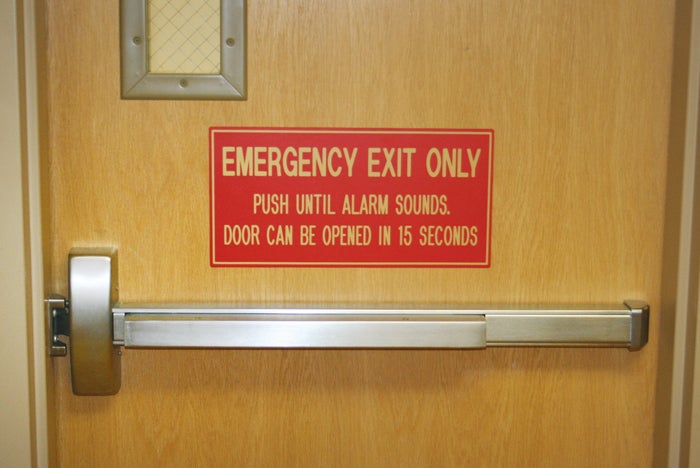Assessing existing locking arrangements for compliance
Performing an analysis of existing locking arrangements is a difficult task, given the variability of egress systems and the number of existing conditions that have an impact on code requirements. Recommended steps to perform a locking-arrangement assessment include:
- Discuss the goal of providing the security on the door with the stakeholders.
- Determine which sides of the door (if any) are required for egress.
- Document existing conditions at the door, such as which sides are secured, the types of patients treated in the area, presence of exit signs, manual-release devices, motion sensors, signage and similar conditions.
- Determine which locking arrangement appears to be installed and review code to ensure that all features are provided.
Only doors that are required for egress must meet one of the locking-arrangement approaches. Sometimes the simplest fix for what was thought to be a noncompliant locking arrangement is to remove the exit signage, because doors that are not required for egress are permitted to be secured in any manner. A complete egress analysis should be performed to ensure that all other egress requirements are in compliance. Doors often have several features that do not meet all requirements from a single-locking arrangement. In this case, it is recommended to determine which locking arrangements are permitted by code and estimate the cost for each approach to bring the door into compliance.
There is a significant amount of information to gather to perform a comprehensive, locking-arrangement analysis so documenting all the existing conditions is important for a successful outcome.


